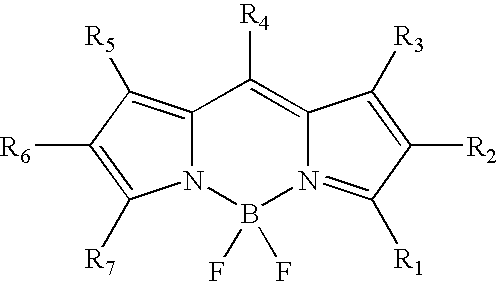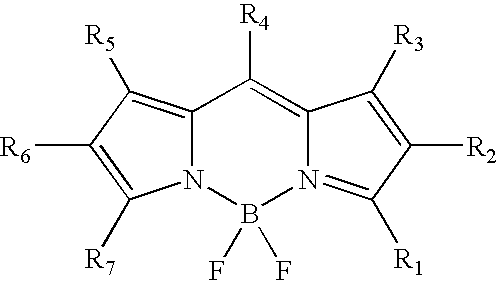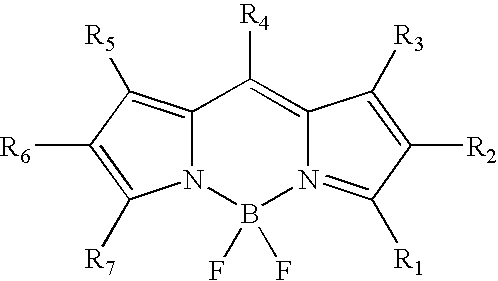Labeling of immobilized proteins using dipyrrometheneboron difluoride dyes
a technology of dipyrrometheneboron and immobilized proteins, which is applied in the field of labeling or detecting of poly (amino acids), can solve the problems of poor reproducibility, limited dynamic range, and limited flexibility
- Summary
- Abstract
- Description
- Claims
- Application Information
AI Technical Summary
Benefits of technology
Problems solved by technology
Method used
Image
Examples
examples
[0092]The following examples describe specific aspects of the invention to illustrate the invention and to provide a description of the methods for those of skill in the art. The examples should not be construed as limiting the invention, as the examples merely provide specific methodology useful in understanding and practicing the invention. The reagents employed in the examples are commercially available or can be prepared using commercially available instrumentation, methods, or reagents known in the art. The foregoing examples illustrate various aspects of the invention and practice of the methods of the invention. Each of the references cited in the examples is incorporated herein by reference in its entirety. The examples are not intended to provide an exhaustive description of the many different embodiments of the invention nor to limit the selection of suitable dyes beyond what has already been described above. Thus, although the forgoing invention has been described in some...
PUM
 Login to View More
Login to View More Abstract
Description
Claims
Application Information
 Login to View More
Login to View More - R&D
- Intellectual Property
- Life Sciences
- Materials
- Tech Scout
- Unparalleled Data Quality
- Higher Quality Content
- 60% Fewer Hallucinations
Browse by: Latest US Patents, China's latest patents, Technical Efficacy Thesaurus, Application Domain, Technology Topic, Popular Technical Reports.
© 2025 PatSnap. All rights reserved.Legal|Privacy policy|Modern Slavery Act Transparency Statement|Sitemap|About US| Contact US: help@patsnap.com



